
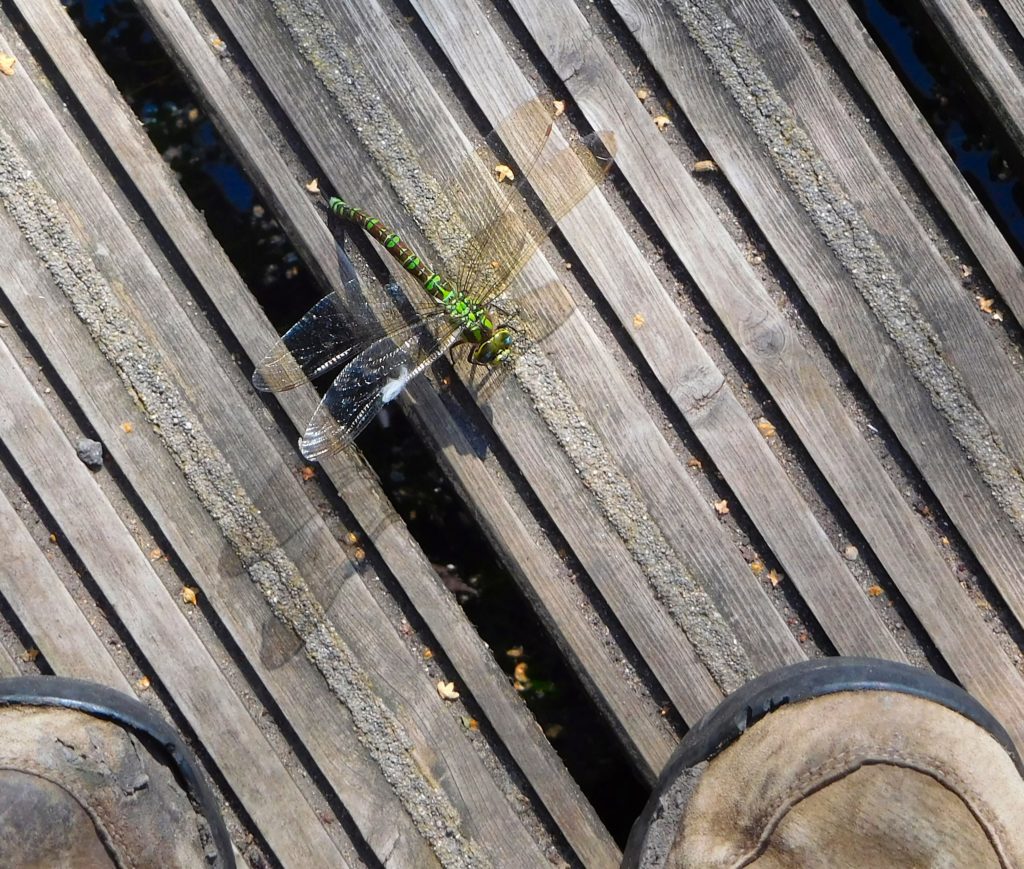











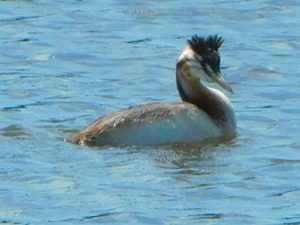

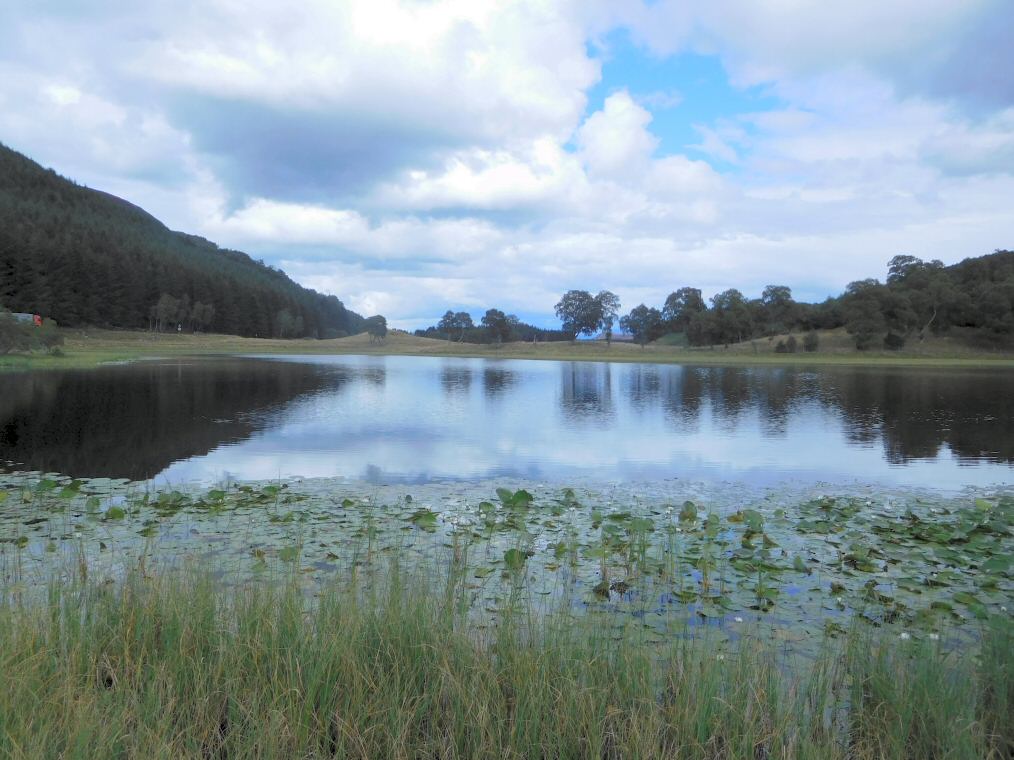
The Least Water-Lily, Nuphar pumila, is a rare plant. It’s even harder to find than it could be because it’s small, lives in remote Scottish lochs among other floating-leaved plants (generally way out across a swamp, so impossible to photograph decently), and most famously, because it hardly ever flowers.
But I’m getting ahead of myself. I learnt about this tantalising little plant while visiting Wakehurst Place, the beautiful country seat of Kew Gardens. That day, it was holding a celebration of its wonderful work conserving seeds of plants from around the world in its extraordinary seed bank, and the staff were all available, full of smiles and sunshine, to greet the public, show off their array of techniques and gadgetry, and to explain their work.

One of the stalls had a display about the Least Water-Lily. It was a small cousin of the Yellow Water-Lily, a common enough plant in quiet waters, but far rarer, known almost entirely from Scotland, barring a probable introduction into Shropshire.
Curious, I looked on the web to see where I might find it in Scotland, where I was about to travel. Lochan Ovie or Uvie was practically the first thing I found, and it was in walking distance of where I’d be staying. A visit, or rather a wild water-lily hunt, was in order.
The lochan was indeed wild, with a wide natural border of wet swampy grassland, and a floating zone with Broad-Leaved Pondweed, Potamogeton natans, and Water Horsetail, Equisetum fluviatile, as stated. White Water-Lilies were reasonably abundant.

But there was no sign of the elusive Least Water-Lily. There was an emergent plant with clusters of three leaves: but these were definitely leaves, not the green sepals of water-lily flowers: and certainly not the rounded, floating lily-pads of the Least Water-Lily.
Some pond-skaters scooted about on the inky-blue water. Some tiny sky-blue insects seemed impossibly to have Marangoni propulsion, motoring about with no sign of legs or wings in the surface film.
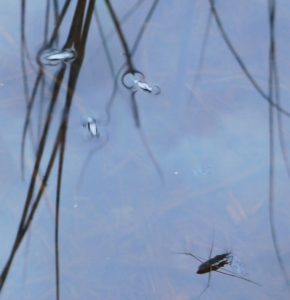
A huge boulder, whether from the crag across the road or left over from the Ice Age, was covered in magnificent lichens, one kind a grey-green crust with startling red apothecia.

But I still felt a little disappointed. As I was walking off, I found a Raven’s feather, a bit battered, but far too big to be a Crow’s. A Raven called cheerfully from far above, somewhere up on Creag Ddu.


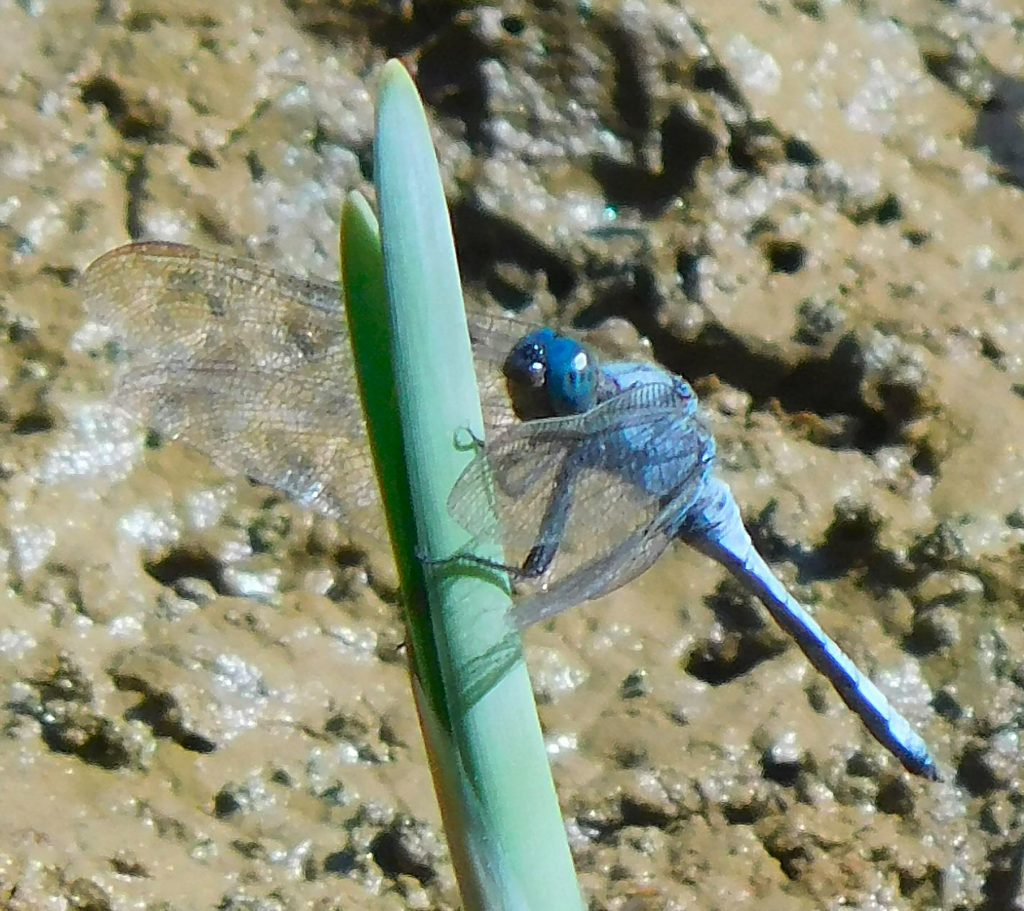






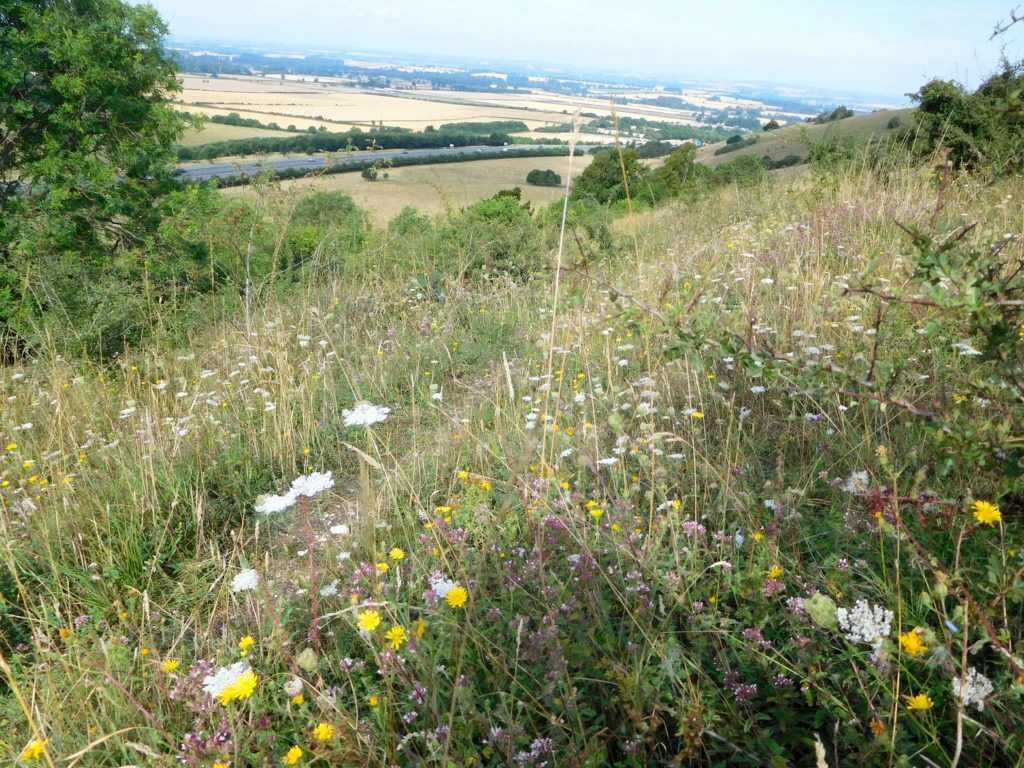






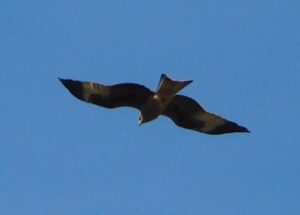
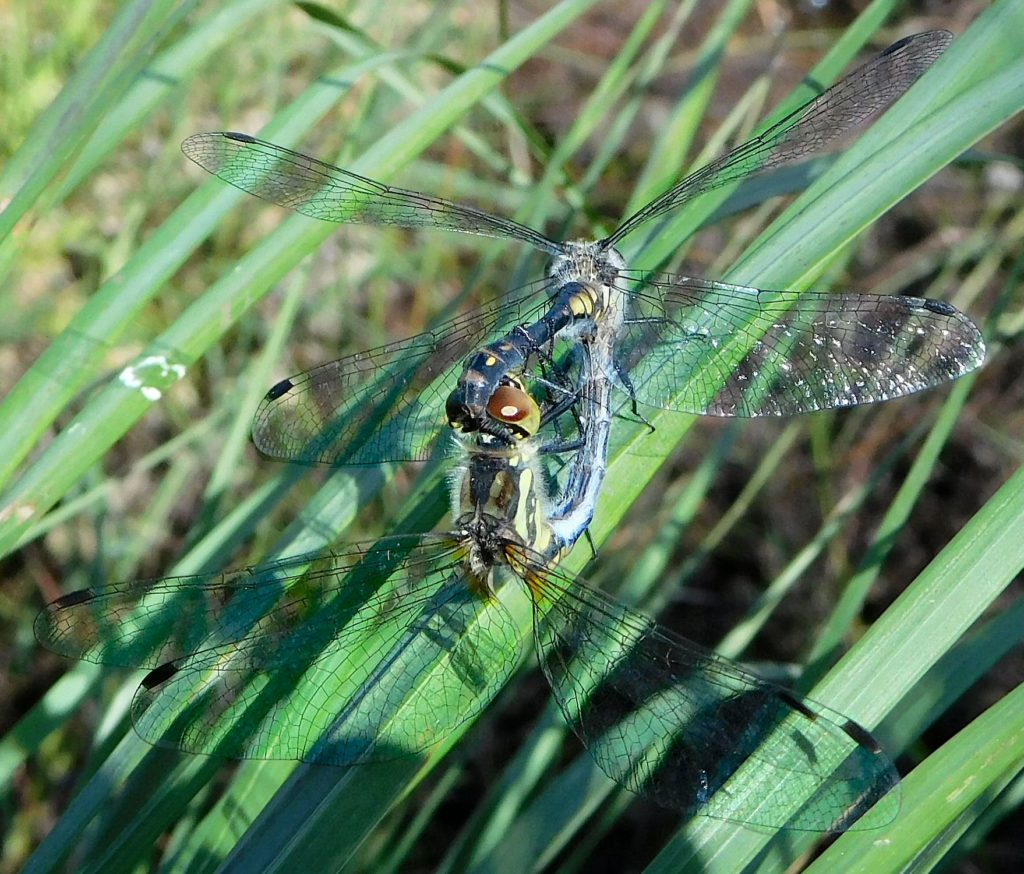

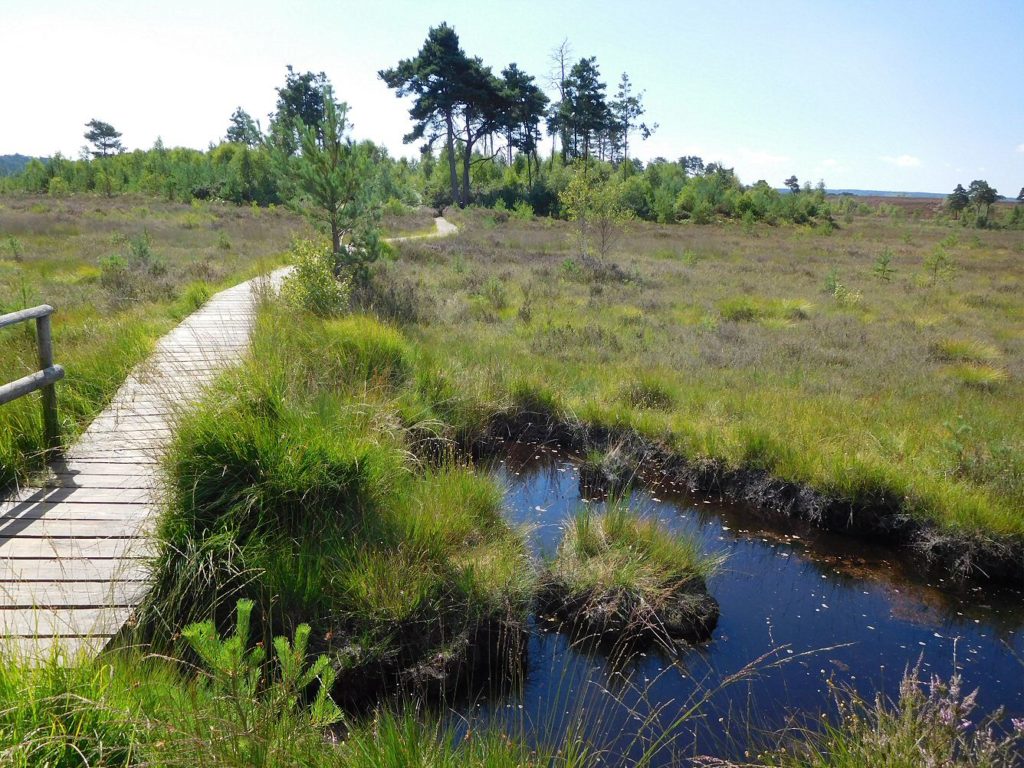

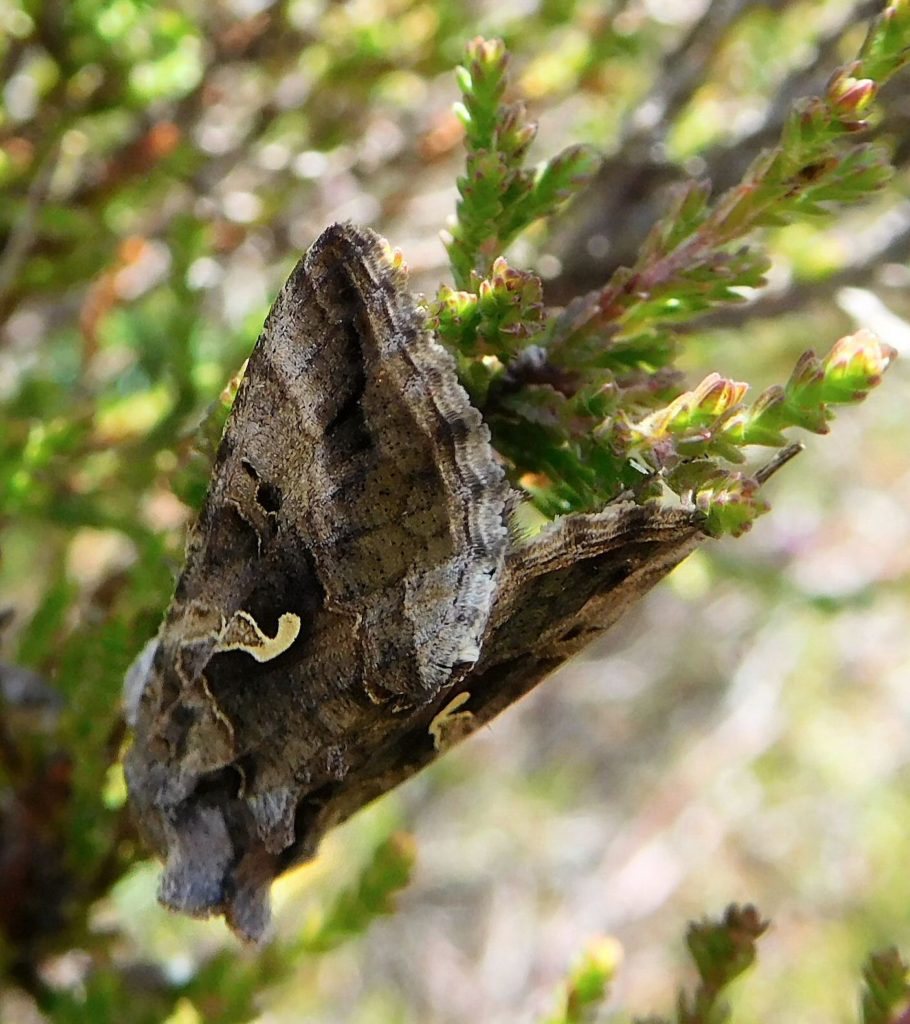
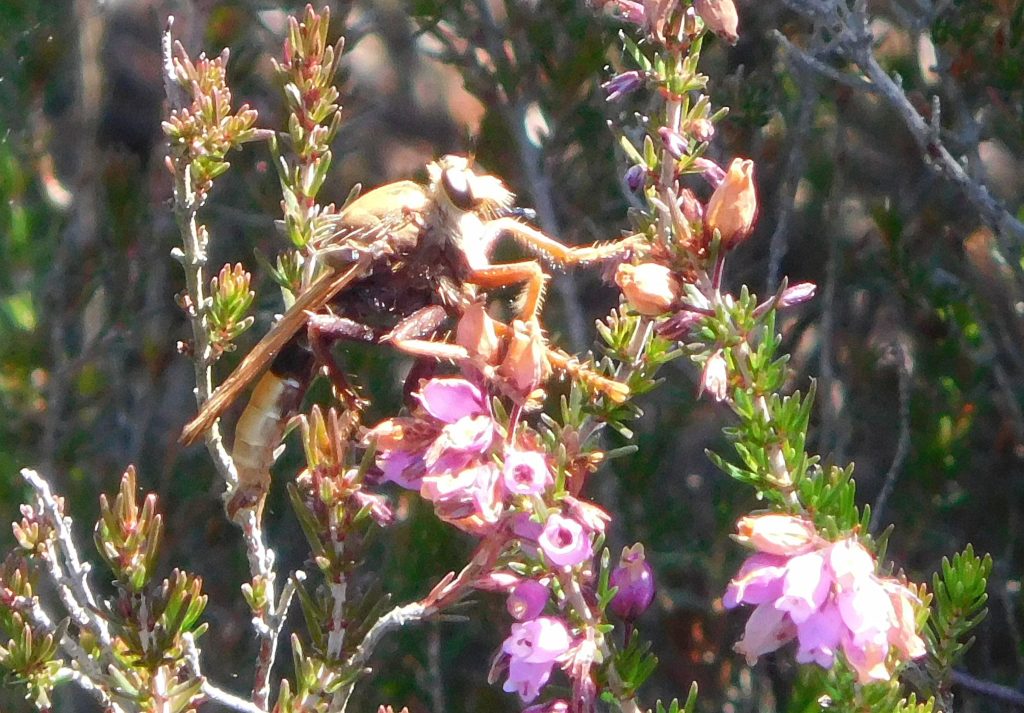
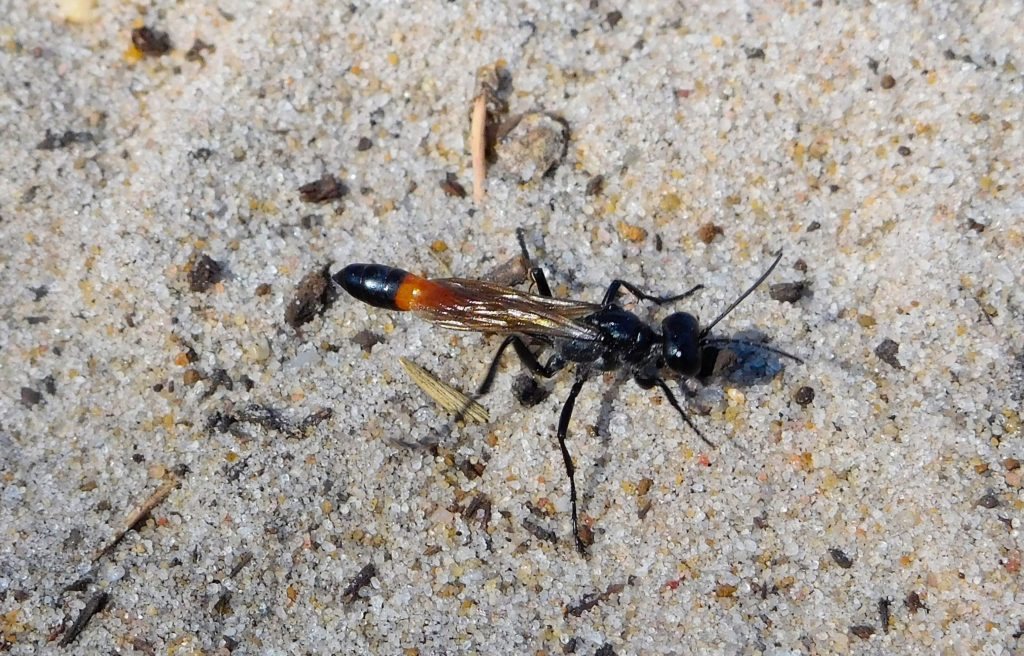
Right at the end of the walk, a huge leaf-green Emperor Moth caterpillar (Saturnia pavonia), whorled with black tufts on each segment, walked briskly like a self-propelled cylindrical concertina across the boardwalk. Just as I grabbed my camera and leant up close, it fell down the gap between two planks and disappeared into the thick green grass below. It was a sight to behold, as long and thick as a finger.